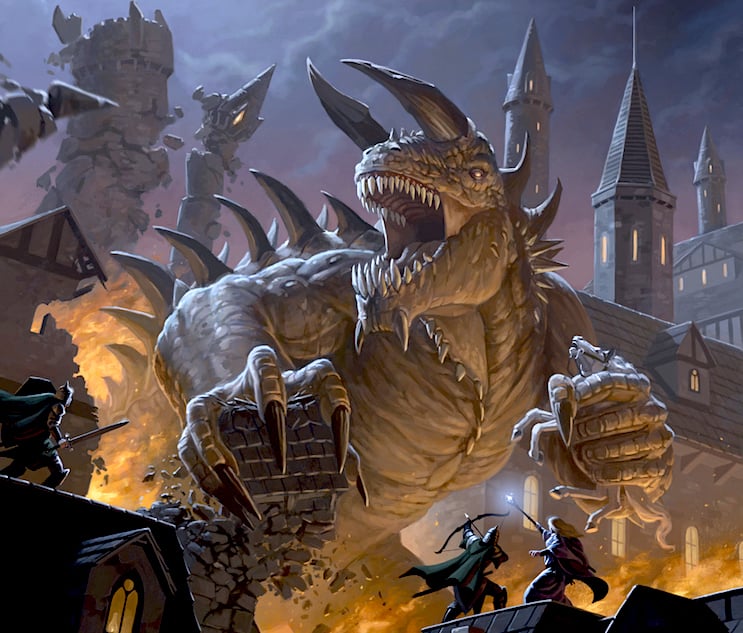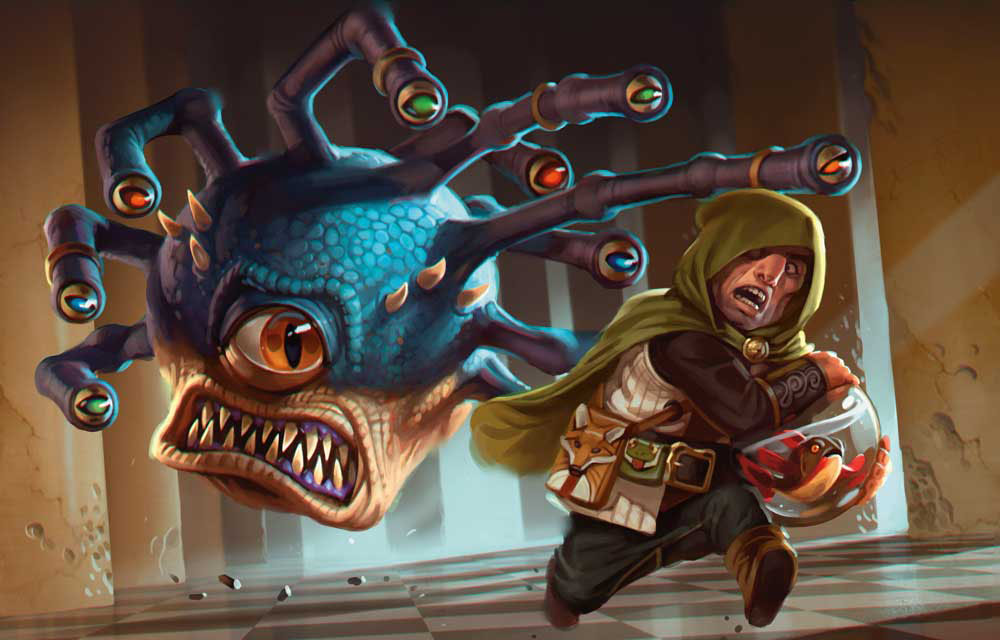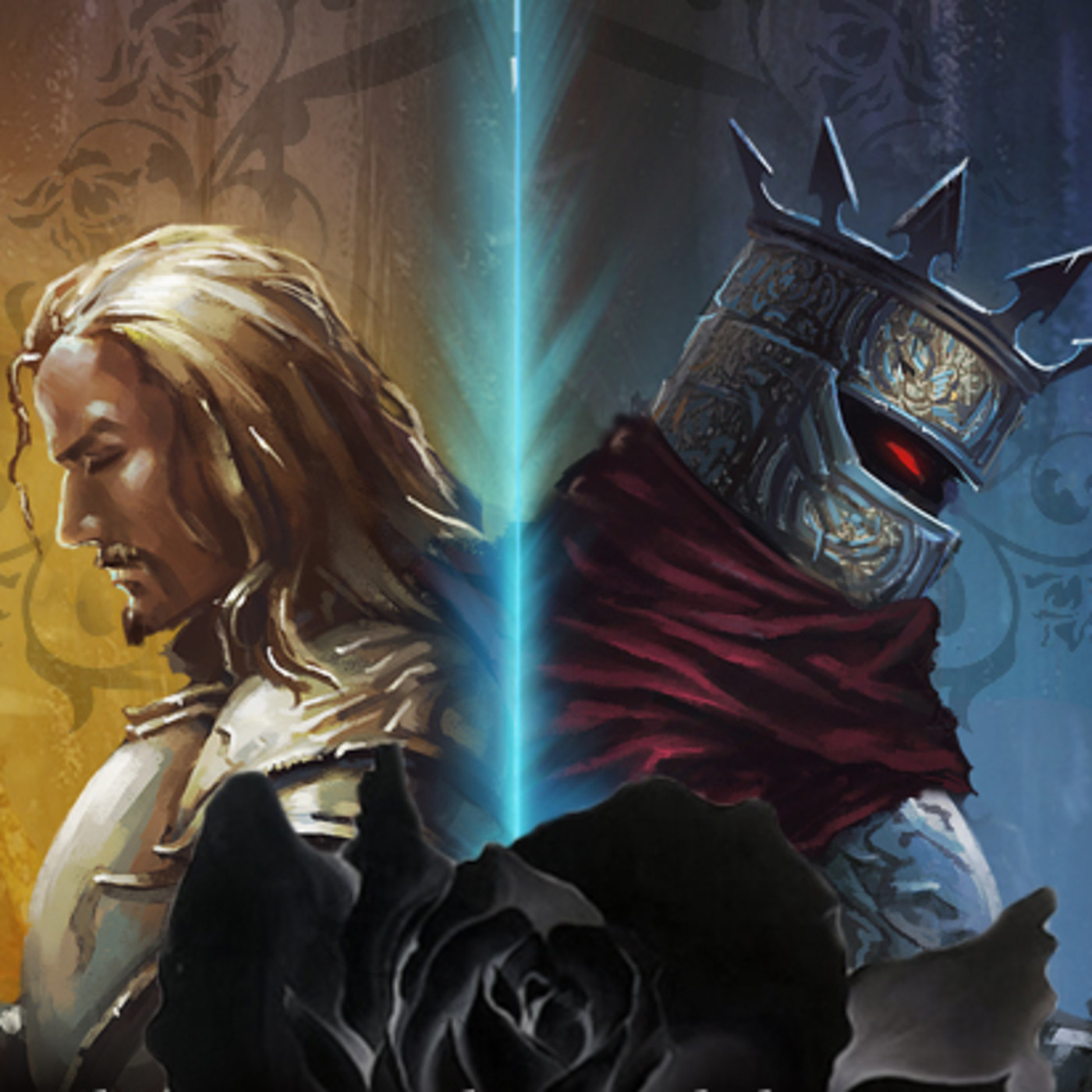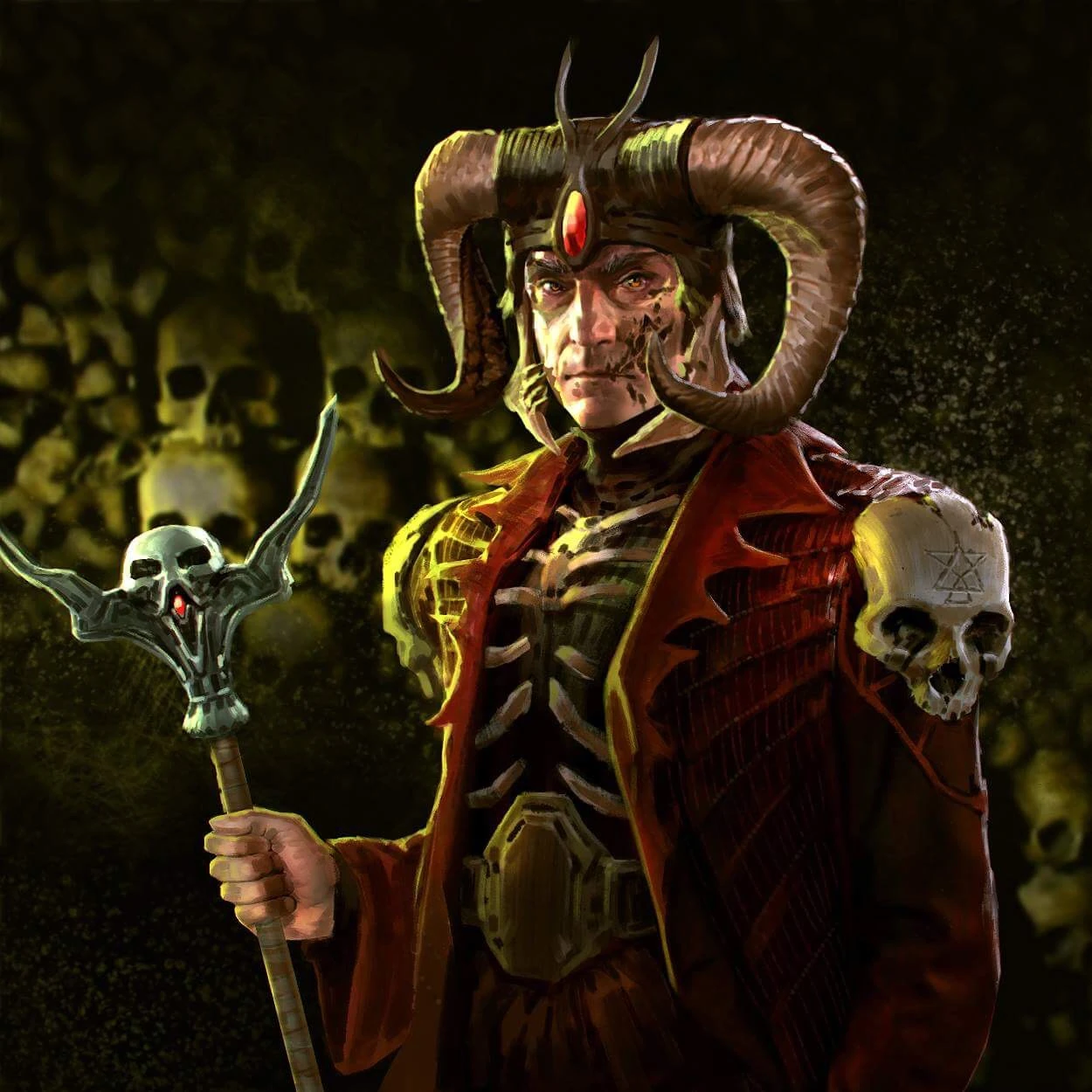So you are planning your next Dungeons & Dragons adventure, or maybe even the campaign itself, and you know that a story is only as good as it’s conflict. This usually translates to a hero is only as good as it’s villain, which is what we’ll be talking about today, though it is important to note that not every D&D adventure needs a villain (maybe we’ll talk about that someday).
There are a lot of things that a villain needs, and while this isn’t everything you should consider, you also don’t need everything on this list. These are just the things I go through when planning my next BBEG.
Because none of my players read this website, I’m going to be discussing the villain that I’m building up to in my current campaign, so you can see how I use these ideas myself.
What is a BBEG?
A Big Bad Evil Guy, this is internet short-hand for your primary villain of the adventure or campaign. On a basic level, a BBEG needs to be:
- Big – It should be a challenge for your players, and there’s a reason no one else has defeated them yet.
- Bad – They are doing things that are objectively harmful, and need to be stopped for the collective good/status quo.
- Evil – They are beyond reason with their rationale, and therefore cannot be simply talked down from their position, but defeated.
- Guy – Not required, in fact be willing to explore non-male villains. Both lady-villains as well as non-binary villains add a lot of potential that may not be as explored yet.
For my adventure, which takes place in Ebberon, my ultimate villain for the campaign is the Lord of Blades, a warforged warlord, born in The Last War. For some background, in the setting, the “Last War” was a war of 5 nations, which ended a couple years ago. Warforged were created and sold to all 5 nations, but have since been granted citizenship. The war ended due to a large destructive force, obliterating one of the 5 nations entirely.

Goals
When creating the BBEG, the first thing you need to do is find out what the villain wants, and why. There are a lot of reasons for a villain to become a villain, both cliche and relatable, and all are equally valid. If you want to just have a lich, or evil King, or Demon Prince, because they are easy to come up with, that works, and you’ll have a plethora of online resources to help you build out that villain. However, if you want to go the Thanos/Killmonger route, and have a villain who has a good point, and isn’t evil for the sake of being evil, that also works.
If you are looking for something a bit more advanced than the cliche evilness route, then a good place to look is at your party, and see if you can pick an opposite value from one of your PCs.
For instance, if you have a player that values justice, then having an evil usurper who murdered the King, would be a great villain. If you have a religious cleric, then having a demon or lich is a perfect fit. Or even if you just have a ranger who loves the hunt, then having a dragon or other intelligent monster is a perfect target.
Then, once you know what the villain wants, you have to figure out what they are willing/able to do it. Are they raising an army, undead or otherwise? Assassinating figureheads? Raising a cult? Raiding villages for loot? Kidnapping powerful spellcasters?
The Lord of Blades is a warforged warlord, who is building an army of warforged to kill all flesh-based civilization, and allow the warforged to rule the world. He was created as the latest weapon of war, and when born in rage, accidentally set off the bomb that destroyed an entire nation. His plan is, through propaganda and fearmongering, to raise a cult-like army, and will then restart the war, with a unified army of warforged that will destroy all other opposition.
The reason I chose him, is because one of my players is a warforged themselves, and the idea of the warforged was incredibly interesting to them, and is actually why we chose to play in Eberron in the first place, was for the warforged storyline.

Power Level
Now, this is in part figuring out how good your BBEG is at accomplishing this goal. This can be answered in two parts. The first part is knowing how powerful your party is. This is the minimum you want your villain to be, is a challenge for them right now. However, what makes a BBEG different from a monster, or an antagonistic NPC, is that they are a threat that can’t be dealt with until later. So the next question is how long do you want this BBEG to be a problem. Is this for a single level adventure, or for the tier of play (about 5 levels), or even for the whole campaign?
Not only this, but is this a recurring villain? Is this a character that the party might fight multiple times, each time the villain escaping? If so, then the villain should level up with the party, each time they collide, the villain is more powerful, and has better abilities that surprise the party each time. The new powers and surprises keeps your BBEG from turning into a Team Rocket, repetitive combat that gets boring, quick.
I’m planning on the Lord of Blades to be the villain until about level 16, and we are currently level 3, so he is going to be fairly powerful by the time they finally reach him. He won’t be a recurring villain, but instead a goal for the players to prepare for, knowing that eventually they want to defeat him, they just don’t yet have the power to.

Followers
Now that we know how powerful your villain is, and what they want, you can begin to figure out their followers, specifically their mid-boss(es). A mid-boss is a lieutenant to the BBEG, someone that you have to defeat before you can face off against the real threat. You can decide how many people are supporting the villains cause, how varied or monolithic they are, and if they’d be willing to betray their leader.
The Lord of Blades has his army of warforged. They believe that it was immoral to create them purely for the purposes of war, given sentience but treated as tools. So they are filled with a rage against humanoids. These are a very monolithic, very structured group, that are starting small in force, and will grow to be larger and more powerful as the party does. Because the party aren’t seeing the Lord of Blades until the end, he isn’t scaling with them, but the force of his following is. I’m using a Magneto (from X-Men) as a template for how he inspires more a powerful, yet downtrodden demographic to rise against the status quo. I haven’t yet figured out a mid-boss yet, as I’m not entirely sure there is one yet. However, around levels 11-16 will be about finding the Lord of Blades, and his lieutenants will be a perfect vehicle for that.

Secrets
There is something about the villain that they don’t want you to know. If your villain is a Lich, then it’s the location of their phylactery, the item that keeps them immortal. It could be a secret weakness, or special item that can be used to defeat them. It could be a part of their backstory, leading to a pressure point you can use to lower their guard, it could be a secret entrance to their fortress, really anything that breaks the illusion that this villain is unstoppable, which is what they want you to think. Now, you don’t have to ever have the party discover this secret, but the mere existence of a secret will influence the villain, and the party will feel as though this villain is more complex.
The major secret for the Lord of Blades is in how he was born. Right now, the party doesn’t yet know if he is even real, and as he gets more popular, more rumors of his existence will grow. So the truth of who he is, and his involvement with the nation-destroying bomb, is his major secret. He likes that people speculate out of fear about him, because then his reputation will make his force even more intimidating.

Kick the Dog
If you ever feel like your villain doesn’t have quite the edge you want, he isn’t as evil as you want him to be, then you can have a “Kick the Dog” moment. This is a moment where your villain does something especially heinous, something that is beyond redeemable. This could be burning an orphanage, murdering a priest, or anything that will make your player’s blood boil, and really hate that guy.
I’m holding back my Kick the Dog moment for the Lord of Blades until about the 11th level, at which point he will begin invading towns and nations. Between now and then, his followers will be assassinating figureheads and spreading fear, but once he begins outright attacking and terrorizing citizens in peacetime without a proper declaration of war, then the party will (hopefully) realize that they need to take action.
Pet the Dog
Alternatively, if you want your players to feel conflicted about your villain, you could have a “Pet the Dog” moment. This is something that makes your BBEG feel more realistic, have some humanity. It has to be something that is usually reserved for good guys, heroes. This could be in the backstory, especially learned when you learn your secret about your villain, because now they know how to defeat him, but also have a reason not to.
My Pet the Dog moment for the Lord of Blades really relies on one of my players, the warforged. While I don’t think that player will ever turn against his party, he will, on some level, understand the anger that the Lord of Blades and his followers feel. He will be the point of sympathy for my villain, as all the rhetoric used will be understood by that player. Again, just like the X-Men, the mutants understand why Magneto does what he does, but they challenge him anyway.

Introduction
Now that you know who your villain is, top to bottom, hopefully you can come up with a great way to introduce him to your party. This can be done in many ways, and it should reflect the theme of the villain himself.
One of my favorite DMs, Matt Colville, talks about how he introduces Kalarel the Vile, a villain he has used for multiple groups. The party is at a tavern at level one, and a fight breaks out. The fight, obviously, ends with the party winning, but that means dead men lying on the ground, and the barkeep is more upset about this than one would usually expect. Then, enters his BBEG, Kalarel, Scion of Orcus, who pays the barkeep for the dead bodies, and pays with Blood-red gold. He hovers over the ground, “as if the very act of walking was beneath him.” The party knows, as this is their first session, that this guy is way too powerful for them to fight, especially as they just finished a fight. They have seen evil up close, and now their mission is to find out what he’s up to, and put a stop to it.
The introduction I’m using for the Lord of Blades is a very slow burn. The first time they heard his name was in the murmur of a tavern. Then, it was the dying words of a warforged assassin. This is beginning to grow their curiosity, but they don’t yet know what he is, just that he might be a point of interest. It will be only after several, seemingly unrelated events, which all somehow involve the Lord of Blades, that the party will fully understand what they are dealing with.

Finale
Of course, in order to make all of this work worth it, is to have an epic final showdown with the villain. Is this the party against the villain, does he have minions, is he in his lair and have advantages there, how much control does he have in this final fight? There are a million questions to ask, that you want to come up with, because you want the final fight to be memorable. Now, it’s important as always to note that the fight will not go the way you think it will. You do not want to railroad your players so that you can have this fight the way you imagined it. Instead, think of how the villain would like the fight to go, up to and including winning. What power, resources, and style does the villain have to defeat the party, and it’s up to the players (as always) to make the right decisions, in order to win. They will surprise you, just as they surprise the villain themselves, and you’ll have a clearer idea of what the villain would do in response.
My finale will likely be a full on military assault on the Lord of Blades’ compound. He still resides in the rubble of the country he destroyed, in a large natural stronghold, guarded by warforged soldiers, juggernauts, titans, and even a Tarrasque that the party will have to defeat or avoid, in order to get to the Lord of Blades. There will be opportunities throughout the campaign for the party to raise an army themselves, as well as form alliances with neighboring nations, to help them access the stronghold. The return to the Last War is the central conflict that this BBEG represents, and so it needs to feel like that is what they are fighting.


Reblogged this on DDOCentral.
LikeLike